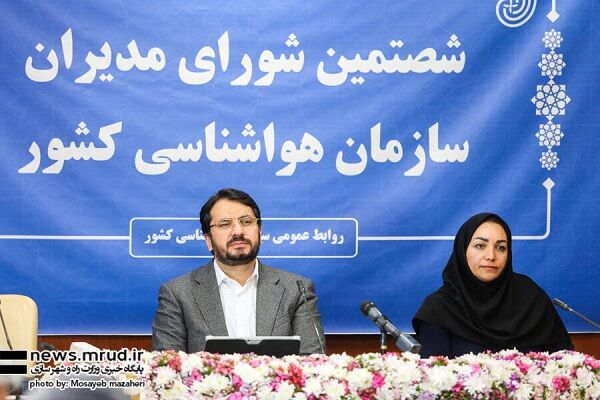Tehran, February 21 (MRUD NEWS)—Iran Meteorological Organization has inaugurated an indigenous system for spot weather forecasting which is launched by Iranian experts at Iran Meteorological Organization in order to provide services to different users, and also resumed the satellite communication center in Tehran.
The official inauguration was held on February 21 by presence of Iran Minister of Roads and Urban Development, Mehrdad Bazrpash, and deputy minister and head of Iran Meteorological Organization, Sahar Tajbakhsh.
The system is one of the most practical weather forecasting tools and can provide spot forecasting for all parts of the country up to more than 10 upcoming days. Moreover, this system provides the possibility of providing operational services in transportation networks including road, rail, sea and air transportation on the surface of the earth and the upper layers of the atmosphere.
The spot forecasting system is being indigenously operated for the first time in Iran Meteorological Organization designed and prepared in the Atmospheric Science and Meteorological Research Center
It has a resolution of 2 km and predicts 17 meteorological parameters for 10 days. By covering the entire territory of Iran, which is implemented for the first time in the region, the system has the potentials for expansion to the neighboring countries.
Furthermore, the satellite communication center in Tehran resumed its operation after several years of hiatus. Along with the ground networks, this center plays an important role in collecting and dissemination of meteorological information. At this stage, 86 stations including airport stations, radar centers and switching centers of Iran in inaccessible areas such as islands, marine platforms, mountain slopes, desert, border areas and roads have been covered by the satellite communication center.
One of the most important mission of Iran Meteorological Organization is to monitor the atmosphere and disseminate information to domestic users, including the country's transportation units and international centers under the World Meteorological Organization (WMO) in order to optimally implement numerical weather forecasting models and provide more appropriate services. In this regard, due to the necessity of online dissemination of atmospheric data, the satellite communication network plays an essential role in the infrastructure of this process.
Additionally, through video conference, the Minister inaugurated 11 rain gauge stations in three cities of Firuzkoh, Damavand and Shemiranat of Tehran and three climatology stations of Khur Ski Resort, Shahrestanak and Barekat and three automatic rain gauge stations of Azimieh, Fardis and Hiv in Alborz Province with a total of 70 billion Rials credit. Simultaneously, 160 stations of various types in 15 provinces with more than 1500 billion Rials credits were added to the existing network of 3000 stations.
Development of observation networks based on international standards is one of the most important development programs of Iran Meteorological Organization.
